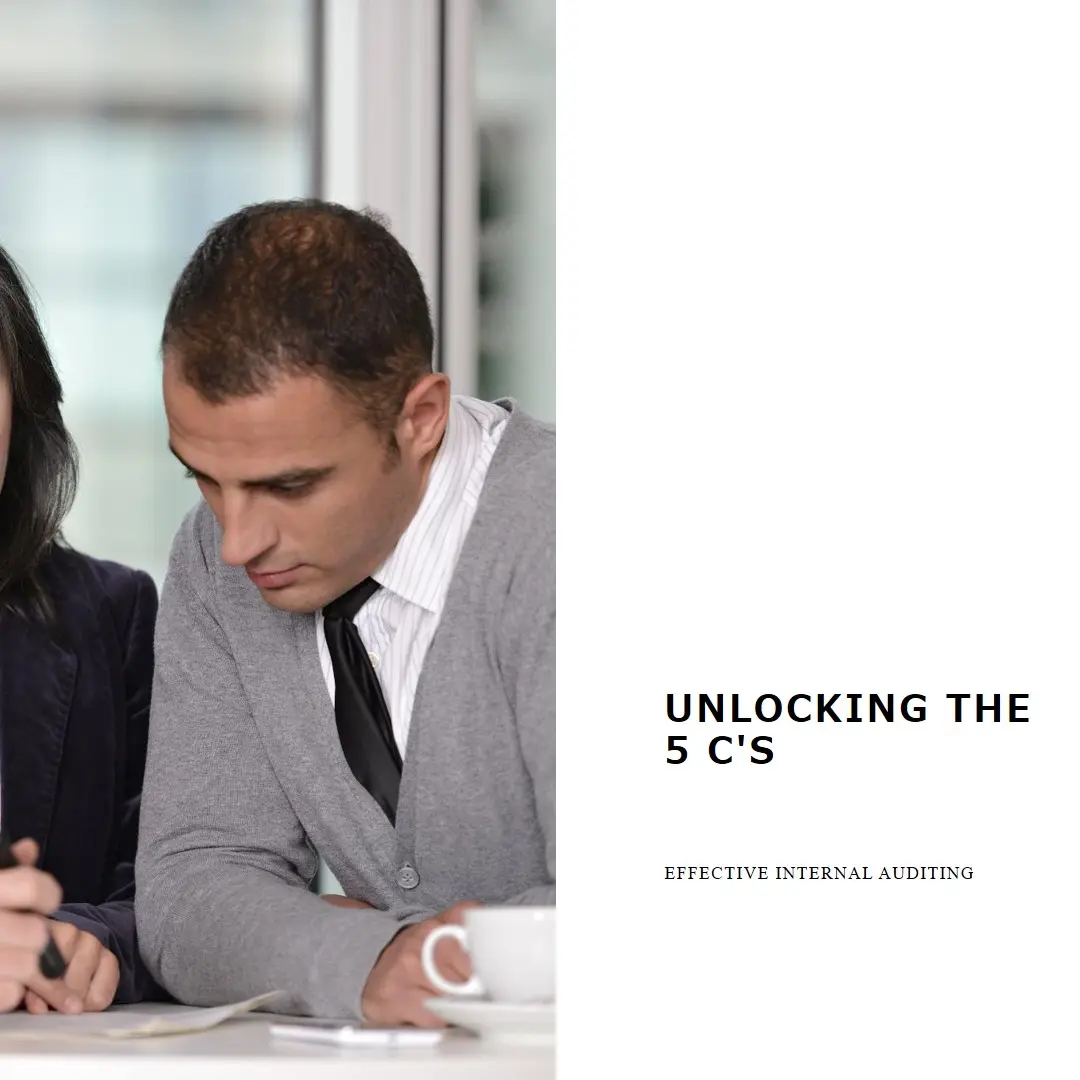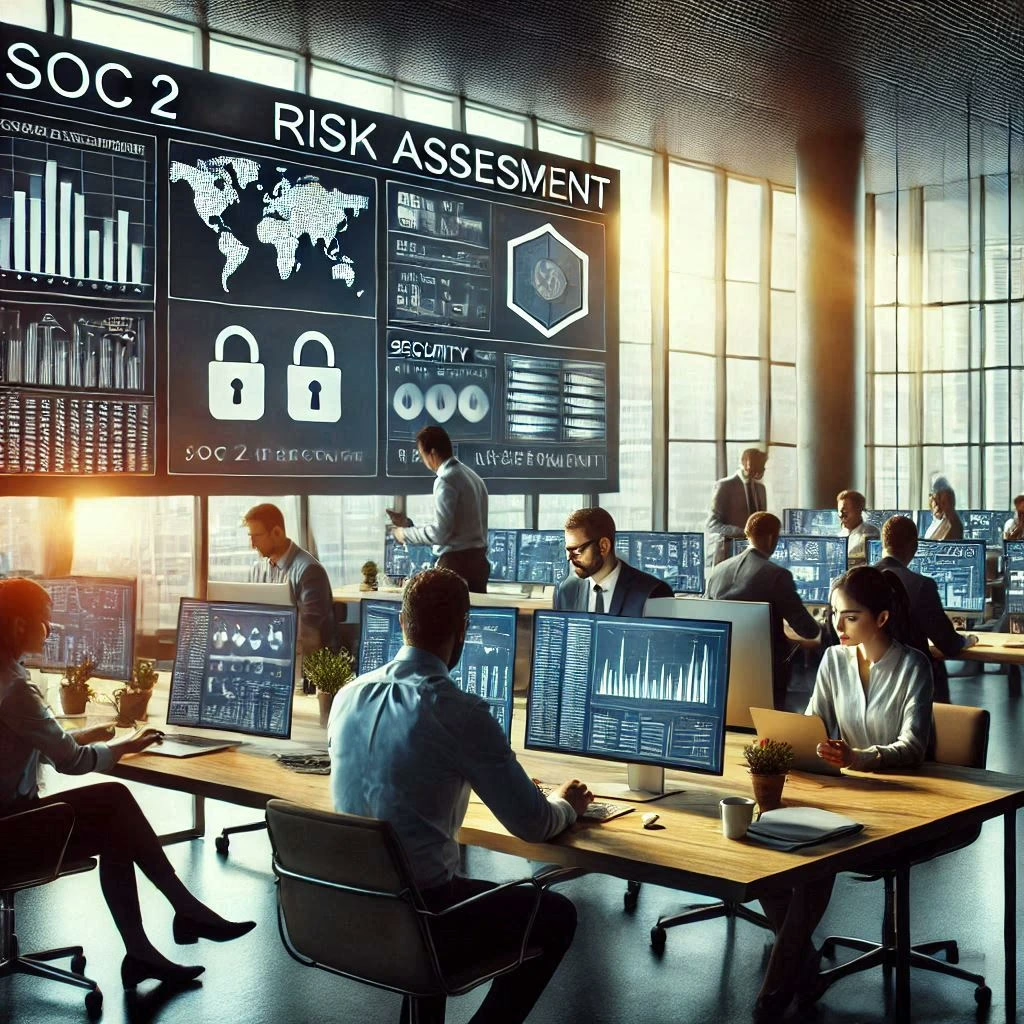In the rapidly evolving business landscape, internal auditing stands as a critical pillar that ensures not only compliance but also the operational excellence of an organization. As businesses grow and face increasingly complex challenges, the role of an internal auditor becomes more vital. This pivotal position not only assesses risks and evaluates controls but also guides the organization towards sustainable success. At the heart of powerful internal audit processes lie the 5 C’s: Competence, Compliance, Communication, Control, and Continual Improvement. These components are not just buzzwords; they are the scaffolding that supports effective internal auditing. In this article, we will delve into each of these aspects, exploring how they contribute to making internal auditing a dynamic tool for organizational health and prosperity. By unlocking the potential of these 5 C’s, organizations can enhance their auditing strategies, leading to robust governance and improved performance.
Section 1: Competence
The Cornerstone of Professional Auditing
Competence is the foundational element of any effective internal audit function. It encapsulates not only the necessary technical skills and knowledge but also the ethical standards required to conduct audits with integrity and accuracy. Here’s how competence plays a pivotal role in internal auditing:
1. Skill Set and Knowledge Base: Internal auditors must possess a deep understanding of industry practices, regulatory requirements, and the specific operational landscape of their organization. This knowledge enables them to identify risks and assess controls effectively. Continuous education and certification, such as the Certified Internal Auditor (CIA) or Certified Information Systems Auditor (CISA), keep auditors at the forefront of changes in audit standards and methodologies.
2. Ethical Integrity: Competence goes beyond technical acumen; it also involves a strong ethical framework. This is crucial because internal auditors often face situations where they must stand firm on principles against potential internal pressures. A commitment to ethics ensures that their findings and reports are trustworthy and unbiased, providing true value to the organization.
3. Adaptability and Problem-Solving Skills: In today’s dynamic business environment, auditors must be adaptable, capable of thinking critically and creatively to solve complex problems. Competence includes the ability to apply knowledge flexibly and innovatively, tailoring auditing practices to new technologies, emerging industry trends, and evolving regulatory landscapes.
4. Communication Skills: Part of being competent involves the ability to communicate findings effectively to various stakeholders. Auditors must translate complex audit results into clear, actionable insights that management and boards can understand and act upon. This includes writing comprehensive reports and presenting findings in a manner that is both persuasive and accessible.
5. Leadership and Influence: Experienced auditors often lead teams or projects, requiring strong leadership skills to guide their teams and influence decision-making processes within the organization. Competence in this area enhances the auditor’s ability to advocate for necessary changes and improvements effectively.
By ensuring that competence is a key focus, internal audit functions can significantly enhance their credibility and the overall impact of their work. This not only aids in maintaining rigorous standards within the audit department but also contributes to the strategic success of the entire organization.
Section 2: Compliance
The Backbone of Audit Assurance
Compliance is a critical component of internal auditing, serving as the backbone that supports the entire audit process. It ensures that an organization adheres to external laws and regulations as well as internal policies and procedures. Here’s a closer look at why compliance is indispensable in internal auditing:
1. Regulatory Adherence: Every industry operates under a specific set of regulations that govern its functioning. Compliance in internal auditing ensures that the organization remains on the right side of these laws, preventing legal penalties and protecting its reputation. Internal auditors must have a thorough understanding of applicable laws and the implications of non-compliance, which includes keeping abreast of any updates or changes in regulatory standards.
2. Enforcement of Internal Policies: Beyond external laws, organizations often have a framework of internal policies designed to streamline operations and uphold ethical standards. Internal auditors play a key role in ensuring these policies are being followed, identifying any deviations that could undermine organizational objectives and suggesting corrective actions.
3. Risk Management: Effective compliance helps in identifying and managing risks proactively. By ensuring that all regulations and policies are followed, auditors can help foresee potential risks to financial stability, data security, and operational integrity. This proactive approach not only saves costs but also shields the organization from potential crises.
4. Building Trust and Credibility: Organizations that consistently comply with legal and internal standards are more likely to earn and retain the trust of stakeholders, investors, and the public. Internal auditing fortifies this trust by transparently and rigorously ensuring compliance, thereby enhancing the organization’s credibility and reputation.
5. Framework for Continuous Improvement: Compliance is not a static goal but a dynamic process that evolves with changing laws and organizational priorities. Internal auditors contribute to continual improvement by regularly reviewing and refining compliance mechanisms. This ensures that the organization not only meets current standards but is also prepared for future challenges.
In essence, compliance in internal auditing is about ensuring that the organization not only survives but thrives under the scrutiny of laws and policies. By meticulously upholding standards, internal auditors safeguard the organization’s integrity and contribute to its long-term success.
Section 3: Communication
The Lifeline of Effective Auditing
In the intricate web of internal auditing, communication serves as the lifeline that ensures clarity, transparency, and collaboration. Effective communication is crucial for bridging the gap between auditors, management, and other stakeholders. Here’s how excellent communication transforms internal auditing:
1. Clarity of Information: Auditors gather vast amounts of data, which can only transform into actionable insights through clear and precise communication. Effective communication ensures that audit findings are not just numbers and reports but comprehensible information that management can use to make informed decisions.
2. Engaging Stakeholders: Auditing is not a solitary function; it involves various stakeholders within the organization. Auditors need to effectively engage with these stakeholders to gather necessary information and to communicate audit results. This engagement often requires tailoring the communication style to different audiences, ensuring that the message is not only delivered but also understood and acted upon.
3. Enhancing Collaboration: Auditors often need to work across departments to access information and understand different facets of the organization. Effective communication skills facilitate collaboration, making it easier to navigate through departmental silos and foster a culture of transparency and cooperation.
4. Resolving Conflicts: Audit processes can sometimes reveal issues that are contentious or involve significant changes in established procedures. Skilled communicators can manage and mediate these conflicts effectively, presenting facts in a way that is diplomatic yet firm, and guiding discussions towards constructive resolutions.
5. Promoting a Culture of Openness: When auditors communicate effectively, they encourage a broader culture of openness and accountability within the organization. Open communication channels make it more likely for employees to report discrepancies and for management to appreciate the value of the audit function, promoting an environment where issues can be addressed proactively.
6. Ensuring Compliance and Adoption of Recommendations: The ultimate goal of any audit is not just to identify problems but to solve them. Communication is key to ensuring that recommendations are understood, valued, and implemented. Clear articulation of the benefits and the steps needed to achieve compliance helps in securing buy-in from relevant parties, ensuring that changes are implemented effectively.
Effective communication in internal auditing does more than convey information—it builds trust, fosters collaboration, and catalyzes improvement. By mastering this crucial skill, auditors can significantly amplify the impact and relevance of their work, turning insights into actions that drive organizational success.
Section 4: Control
The Pillar of Internal Audit Effectiveness
Control is a fundamental element of an effective internal audit process. It involves establishing procedures and mechanisms to ensure that the organization’s operations are efficient and aligned with established objectives. Here’s how strong control mechanisms play a crucial role in internal auditing:
1. Framework for Operations: Controls provide a structured framework within which the organization operates. This framework helps in maintaining order and directing the activities of the organization towards its strategic goals. For auditors, understanding and evaluating these controls is essential to ensure that they are adequate and functioning as intended.
2. Prevention and Detection of Irregularities: One of the primary benefits of having robust controls is the prevention and detection of fraud, errors, and other irregularities. By regularly reviewing these controls, internal auditors can identify vulnerabilities early and suggest improvements to enhance reliability and security.
3. Enhancing Efficiency: Effective controls streamline operations, reduce redundancy, and eliminate wastage, thus enhancing operational efficiency. Auditors assess these controls to ensure they are not only effective but also efficient, helping the organization to achieve more with less.
4. Supporting Compliance: Controls are essential for ensuring compliance with laws, regulations, and internal policies. They act as safeguards that prevent deviations from prescribed paths. Auditors verify that controls are adequately designed to enforce compliance and recommend updates where necessary to address new regulations or changes in the business environment.
5. Basis for Continuous Improvement: Strong control mechanisms are dynamic; they evolve as the organization grows and as new risks emerge. Internal auditors play a key role in this evolutionary process by continually assessing the effectiveness of controls and advocating for their improvement, thereby driving continuous enhancement of processes and systems.
6. Risk Management: Controls are an integral part of the organization’s risk management strategy. They help in mitigating risks at various levels of the organization. Effective audit processes ensure that controls are appropriately aligned with the risk profile of the organization, making risk management more targeted and effective.
7. Building Stakeholder Confidence: When stakeholders see that an organization has strong controls in place and that these are regularly reviewed and validated by internal audit, their confidence in the management increases. This confidence can translate into greater investment, more robust partnerships, and a better overall reputation.
In conclusion, control is not just about maintaining power but about fostering an environment where precision, compliance, and efficiency are the norm. By prioritizing robust control mechanisms, internal auditors safeguard the organization’s assets and reputation, contributing to its long-term stability and success.
Section 5: Continual Improvement
The Engine of Sustainable Audit Excellence
Continual improvement is the dynamic component of internal auditing that ensures the function remains relevant and effective amid changing organizational landscapes and external environments. It involves constantly evaluating and enhancing audit processes, methodologies, and outcomes. Here’s how continual improvement acts as the engine of sustainable audit excellence:
1. Adapting to Change: Business environments are never static. New technologies, evolving industry standards, and changing regulatory requirements demand that organizations adapt quickly. For internal auditors, this means continuously updating their skills and methods to stay effective. Continual improvement enables auditors to keep pace with these changes, ensuring that their practices are not only current but also predictive and proactive.
2. Enhancing Audit Methodologies: As audit challenges grow more complex, the methodologies used must evolve. Continual improvement involves reviewing and refining audit tools, techniques, and processes to enhance their precision and effectiveness. This might include integrating advanced data analytics, adopting new software tools, or revising sampling techniques to improve accuracy and efficiency.
3. Learning from Past Audits: Every audit provides a learning opportunity. Continual improvement leverages these experiences, systematically analyzing successes and failures to identify lessons and best practices. This retrospective analysis helps auditors to understand what works, what doesn’t, and how processes can be improved in future audits.
4. Fostering a Culture of Excellence: Continual improvement is not just about processes but also about people. By encouraging a culture that values learning and growth, organizations can ensure that their audit teams are motivated to seek out and implement improvements. This cultural aspect helps in building a resilient team that strives for excellence in every audit cycle.
5. Improving Risk Assessment and Management: Effective risk management is crucial for any organization, and continual improvement in auditing helps in fine-tuning risk assessment processes. By regularly updating risk models and evaluation techniques, auditors can better predict potential threats and provide more strategic insights to the management.
6. Stakeholder Engagement and Satisfaction: As audit processes improve, stakeholder trust in the audit function also increases. Continual improvement ensures that audits meet or exceed stakeholder expectations, enhancing their confidence in the audit’s role within the organization. This leads to better support and resources for the audit department, further enabling its success.
7. Aligning with Organizational Goals: Lastly, continual improvement ensures that the internal audit function remains aligned with the organization’s strategic goals. As these goals shift, the audit processes adapt, ensuring that the function continues to add value in alignment with the organization’s objectives.
In essence, continual improvement is what keeps the internal audit function vital and relevant. By embracing change and striving for betterment in every aspect of the audit process, organizations can ensure that their internal audit teams are not just a compliance necessity but a strategic asset that drives long-term success.
Conclusion
Cementing the Foundation of Audit Excellence with the 5 C’s
The journey through the 5 C’s of Effective Internal Auditing—Competence, Compliance, Communication, Control, and Continual Improvement—underscores the multifaceted nature of this crucial organizational function. As we’ve explored each component, it becomes evident that these elements are not standalone virtues but are deeply interlinked, each enhancing and supporting the others to forge a robust audit process.
Synthesizing the Insights:
- Competence ensures that auditors are equipped with the necessary skills and ethical judgment to perform their duties effectively.
- Compliance anchors the organization in its legal and ethical obligations, safeguarding against risks and penalties.
- Communication acts as the conduit through which findings are transformed into actionable insights, bridging gaps between auditors, management, and stakeholders.
- Control establishes the procedures that maintain order and efficiency, ensuring that operations align with strategic goals.
- Continual Improvement propels the audit function forward, adapting to new challenges and enhancing capabilities over time.
Each of these components plays a crucial role in not just safeguarding the assets and reputation of the organization but also in driving its strategic objectives forward. When internal auditors effectively integrate these 5 C’s into their work, they elevate their role from compliance watchdogs to strategic partners in the organization’s growth.
Moving Forward: Organizations that prioritize these elements within their audit departments can expect not only to meet regulatory demands but also to excel in their operational and strategic executions. For businesses looking to thrive in complex and competitive environments, embracing these principles is not just advisable but essential.
In conclusion, unlocking the 5 C’s of effective internal auditing is a strategic endeavor that requires dedication and foresight. Organizations that champion these principles are well-equipped to face the future with confidence, armed with an audit function that is as robust as it is reflective of their commitment to excellence and integrity.
Find out more about Shaun Stoltz https://www.shaunstoltz.com/about/ This post was written by an AI and reviewed/edited by a human.



